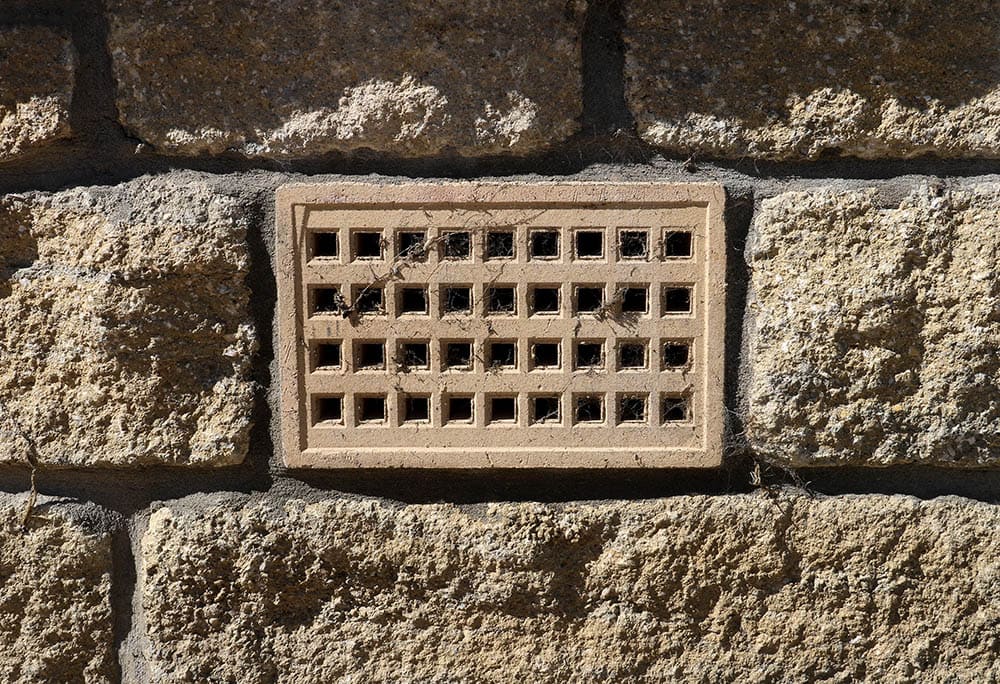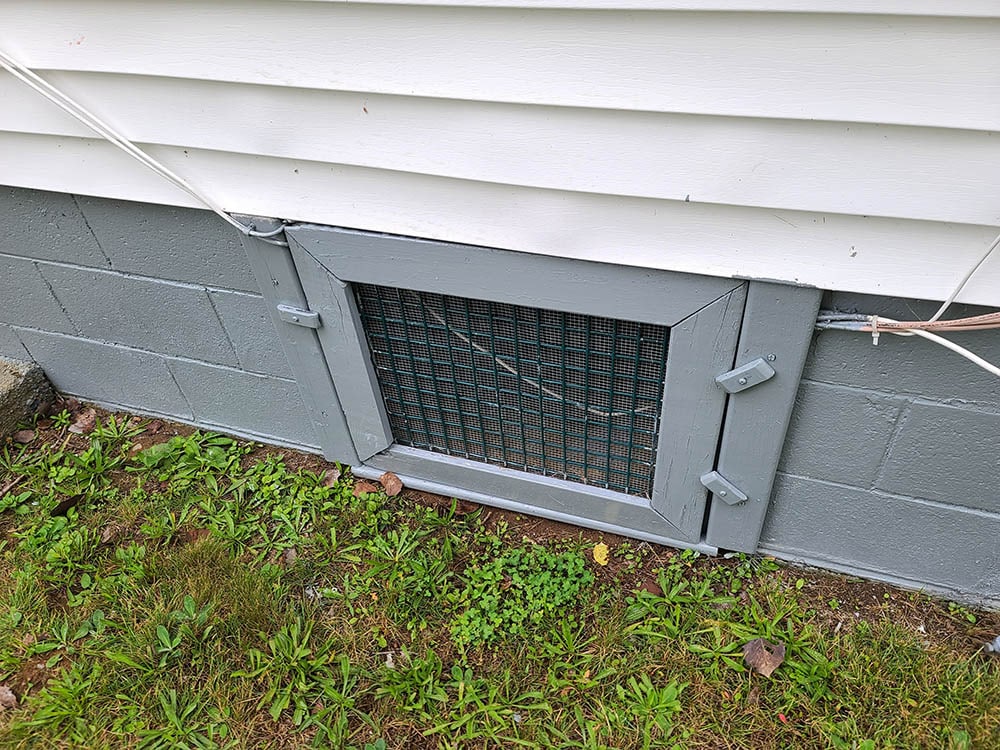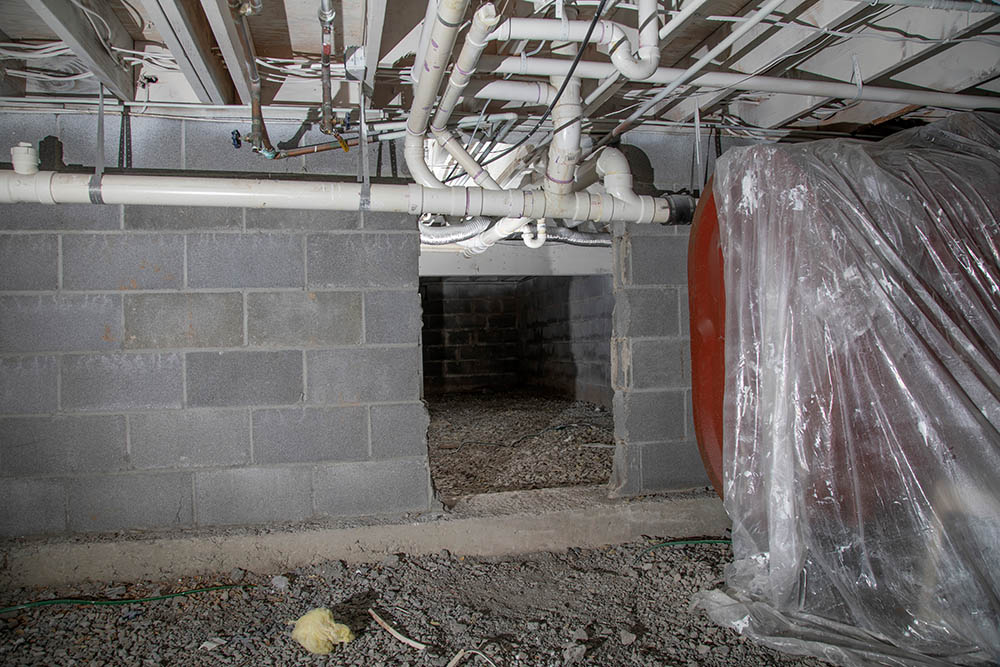Do Crawl Space Ventilation Fans Work? Pros, Cons, & FAQ
-
Pete Ortiz
- Last updated:

You probably have never thought about how moisture escapes your crawl space. But if you want a house without molds or pests, knowledge of the crawl space ventilator is vital. Understanding this will also help you maintain the structure and well-being of your home.
First, a crawl space is a vacant, incomplete, small area inside a building between the first floor and the ground. A crawl space ventilator primarily brings in air from the outside into that narrow space. Therefore, as outside air circulates into the crawl area, water will not pool around, helping you manage moisture issues.
If you have wondered whether crawl space ventilation fans work, you are in the right place. This post will let you know whether crawl space fans work when the outside air is dry, whether you should air your crawl area, and the fans you’ll require for the space. You’ll also discover whether a dehumidifier or a fan is better for your crawl area. Let’s get started!
Do Crawl Space Fans Operate When It Is Dry Outside?
For the fan to function, the air outdoors must be dryer than the air inside the crawl space. The process is as follows: the controller uses two sensors to gather information about the air inside and outside the crawl space. It uses this data to determine operation by calculating the dew point outside and inside.
The most effective approach to gauge moisture in the air is to use the dew point. If the ventilation air’s dew point is higher than the crawl space soil’s temperature, the air cannot remove moisture and even becomes a moisture source for the crawl space.
By introducing hotter or more humid air, crawl space ventilators aggravate conditions when the air enters the crawl space’s cooler environment.
Therefore, these fans should only be used when the air outside is dry. Fall, winter, and spring are often the driest and coldest seasons in most locations, making them excellent times to dry up crawl space.

Should I Ventilate My Crawl Space?
Maybe you need to ventilate your crawl space. But before you start, first, check out the pros and cons, so you can decide on the best path to take.
- The vent enables airflow into your crawl space from one direction leaving through an opposite vent, letting in fresh air.
- Crawl spaces with ventilation are cheaper, especially since many homes were built when ventilating a crawl area was standard.
- Eliminates the spread of mold, wood rot, and mildew.
- For humid places (especially southern cities), the air outside responsible for ventilating the crawl area is equally moist to the air inside. Since it cannot control this humidity, it’ll encourage dampness in the crawl space. This will in turn lead to the growth of mildew and molds.
- Air from the crawl area penetrates your home through the “stack” effect. You actually take in about 40% of the damp crawl space air if you are on the first floor. Thus, when the air gets into your living area through the floorboards, it will result in you breathing poor air quality owing to its humidity.
Find a HVAC, AC and duct specialist in your area, and get free, no-commitment estimates for your project.Consult a HEATING & COOLING expert

How Many Vent Fans for Crawl Spaces Do I Need?
The crawl space vent fans you need will be determined by the CFM (cubic feet per minute). Knowing the air quantity a fan can move is essential before you buy one. And this is where the CFM comes into play. To obtain the proper air volume multiply the crawl space’s height, width, and length.
Suppose your crawl space is 30 feet long, 10 feet wide, and 1.5 feet high, then 450 (30x10x1.5) cubic feet of air should be inside. You can accurately determine the number of fans to use in the available area with precise measurements.

Where Should I Place the Fans?
Suppose you don’t have a dryer. Then place the fan wherever you like in the crawl space. But ensure you move it away from doors since they’ll let air in. To be safe, you may, for instance, set the door and the fan facing each other from a distance.
However, if you have a dehumidifier, put it in the center of the crawl space before positioning the fan furthest away from it. If the fan is placed close to the humidifier, the dry air will be trapped and directed outdoors.
Should I Mount a Dehumidifier or Fan in the Crawl Space?
You should consider the compatibility and utility of a fan and a dehumidifier before purchasing one for your crawl area.
If heavy humidity and dampness are your primary concerns, a dehumidifier is ideal for your crawl area. But, if all you require is good ventilation and some cooling, a crawl space fan is suitable. If you need to fix a waterlogged space, however, a dehumidifier will be more effective than a crawl space fan.
Moreover, if you want to dry out the area once the flood is drained completely, use a dehumidifier. This method will also eliminate mold spores and minimize moisture. But a dehumidifier will not cool better than a fan. If you want a device to lower humidity, cool, and aerate the crawl area, a dehumidifying fan could be just what you need.
A Crawl Space Fan – When Do You Use It?
If the sole issue in the crawl space region is heat and inadequate ventilation, a crawl space fan is a solution. After all, fresh air is introduced into the crawl space by crawl space fans. Take the crawl space fans installed on the walls, for instance. They remove stenchy smells, ensuring the crawl space stays fresh. Besides, they serve as excellent coolants in less severe temperatures.
Conclusion
In conclusion, it would be best to keep your home how it was built initially. Was your crawl space intended to be regulated non-mechanically? Then don’t add fans. Adding fans unnecessarily will lead to inefficient ventilation and unnecessary reliance on them.
- https://www.airpurelife.com/crawl-space-fan-vs-dehumidifier/
- https://www.waterdamageplus.com/crawlspace/crawl-space-drying-fans/
- https://atmox.com/2021/03/29/do-crawl-space-ventilation-fans-work/
- https://crawlpros.com/crawl-space-ventilation-to-seal-or-not-to-seal
- https://crawlspacedoctor.com/2020/03/16/should-your-crawl-space-be-ventilated-or-sealed/
Featured Image Credit: Alistair McDonald, Shutterstock
Contents



